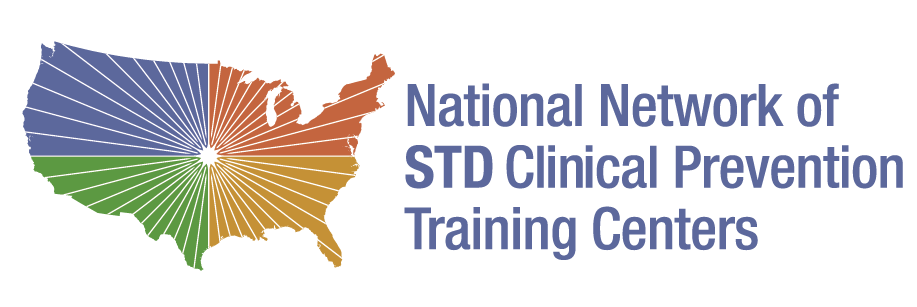Intensive Long-Term Evaluation
National Network of Sexually Transmitted Disease Clinical Prevention Traning Centers (NNPTC)
Att 16_Intensive-Long Term Evaluation-2022
Intensive Long-Term Evaluation
OMB: 0920-0995
 OMB
Control Number 0920-0995
OMB
Control Number 0920-0995
Exp. Date 06/30/2023
TODAY’S DATE
____________________________ M M D D Y Y |
Your confidential ID number is the first two letters of your FIRST name, the first two letters of your LAST name, the MONTH of your birth, and the DAY of your birth. |
CONFIDENTIAL IDENTIFIER |
Public
reporting burden of this collection of information is estimated to
average 6 minutes per response, including the time for reviewing
instructions, searching existing data sources, gathering and
maintaining the data needed, and completing and reviewing the
collection of information. An agency may not conduct or
sponsor, and a person is not required to respond to a collection of
information unless it displays a currently valid OMB control
number. Send comments regarding this burden estimate or any
other aspect of this collection of information, including
suggestions for reducing this burden to CDC/ATSDR Reports Clearance
Officer; 1600 Clifton Road NE, MS D-74, Atlanta, Georgia 30333;
ATTN: PRA (0920-0995).

Intensive Long-Term Evaluation
A1f. The training is relevant to my work.
-
strongly disagree
Strongly agree
A2f. The training improved the way I do my work.
-
strongly disagree
Strongly agree
A3f. I am using what I learned in this training in my work.
-
strongly disagree
Strongly agree
A3fa. If you have not used what you learned, please explain why not.____________________________________
A4f. In the prior evaluation, your response to the following question, “do you intend to make changes in your practice or at your worksite setting”, was <insert user’s response from immediate post evaluation>. (Skip for those who do not have piped response from Post evaluation)
Were you able to make this change?
Yes
No
A4fa. If No, please explain?____________________________________
A5f. As a result of the training, did you make changes in your practice or at your worksite? (Skip for those who answer A4f)
Yes
No
Not my job
Other reason (please specify)____________________________________
A5fa. If yes, what change(s) did you make?____________________________________
|
As a result of the information presented did you…
|
Yes |
No |
I was already doing this |
SGCH1 |
Use the CDC STD Treatment Guidelines in your practice? |
1 |
0 |
2 |
SGCH2 |
Download the CDC STD Treatment Guidelines app? |
1 |
0 |
2 |
SGCH3 |
Use the STD Treatment Guidelines wall chart or pocket guide? |
1 |
0 |
2 |
SGCH4 |
Send a consult to the STD Clinical Consultation Network? www.stdccn.org |
1 |
0 |
2 |
|
As a result of the information presented did you… (Select ‘Not Applicable’ if the training did not cover the content area listed) |
Yes |
No |
I was already doing this |
N/A |
SGCH5 |
Increase the proportion of your sexually active asymptomatic female patients under age 25 screened annually for urogenital chlamydia and gonorrhea? |
1 |
0 |
2 |
3 |
SGCH6 |
Increase the proportion of your male patients who have sex with men screened for syphilis, gonorrhea, and chlamydia at least annually? |
1 |
0 |
2 |
3 |
SGCH7 |
Use CDC-recommended antibiotic therapy to treat uncomplicated gonorrhea? |
1 |
0 |
2 |
3 |
SGCH8 |
Recommend rescreening in 3 months following a gonorrhea, chlamydia or trichomonas diagnosis? |
1 |
0 |
2 |
3 |
A6f. Did any of these factors MAKE IT HARDER for you to incorporate the STD practices recommended in the presentation? (select all that apply)
Lack of time with patients
More important patient concerns
Cost/lack of reimbursement
Policies where i work
Resistance to change by supervisor or colleagues
Lack of equipment or supplies
No opportunity to apply practices
I did not feel confident
Coworkers need training
Nothing interfered
other, please specify ___________________________________________________
A7f. Did any of these factors HELP you incorporate the STD practices recommended in the presentation?
(select all that apply
Reimbursement or other financial incentive
Support of supervisor and/or colleagues
Standing orders
Reminder in chart
Convenient supplies
Posted patient instructions for obtaining specimens
Electronic health system
Knowledge/Confidence gained from training
Trained coworkers
Nothing specific helped
Other, please specify ___________________________________________________
The following questions ask about screening rates. Please select the range that is the best estimate of your screening practice.
PPC1f Now, 3 months AFTER training, approximately what % of sexually active asymptomatic female
patients under age 25 are you screening annually for chlamydia?
-
0%
1-25%
26-50%
51-75%
76-90%
>91%
NA
PPC2f Now, 3 months AFTER training, approximately what % of pregnant patients under age 25 are you
screening for chlamydia?
-
0%
1-25%
26-50%
51-75%
76-90%
>91%
NA
PPG1f Now, 3 months AFTER training, approximately what % of sexually active asymptomatic female patients
under age 25 are you screening annually for gonorrhea?
-
0%
1-25%
26-50%
51-75%
76-90%
>91%
NA
PPG2f. Now, 3 months AFTER training, approximately what % of pregnant patients under age 25 are you
screening for gonorrhea?
-
0%
1-25%
26-50%
51-75%
76-90%
>91%
NA
PPG3f Now, 3 months AFTER training, approximately what % of your male patients who have sex with men
are you screening annually for gonorrhea and chlamydia?
-
0%
1-25%
26-50%
51-75%
76-90%
>91%
NA
PPS1f Now, 3 months AFTER training, approximately what % of your male patients who have sex with men are
you screening at least once a year for syphilis?
-
0%
1-25%
26-50%
51-75%
76-90%
>91%
NA
PPS2f Now, 3 months AFTER training, approximately what % of your pregnant patients are you screening for syphilis?
-
0%
1-25%
26-50%
51-75%
76-90%
>91%
NA
PPS3f Now, 3 months AFTER training, approximately what % of your patients recently diagnosed with
syphilis are you testing for HIV?
-
0%
1-25%
26-50%
51-75%
76-90%
>91%
NA
PPHPV1f Now, 3 months AFTER training with approximately what % of your non-vaccinated 11 to 26 year-old
female patients are you discussing HPV vaccination during a preventive health visit?
-
0%
1-25%
26-50%
51-75%
76-90%
>91%
NA
PPHPV2f Now, 3 months AFTER training, with approximately what % of your non-vaccinated 11 to 21 year-old
male patients are you discussing HPV vaccination during a preventive health visit?
-
0%
1-25%
26-50%
51-75%
76-90%
>91%
NA
PPHPV3f Now, 3 months AFTER training, with approximately what % of your non-vaccinated male patients
age 26 or under who have sex with men or are HIV+ are you discussing HPV vaccination during a
preventive health visit?
-
0%
1-25%
26-50%
51-75%
76-90%
>91%
NA
PPSH1f Now, 3 months AFTER training, for approximately what % of patients older than 15 seeing you for a
preventive health visit do you take a sexual history that asks about behaviors that would put them at risk
of getting or transmitting an STD?
-
0%
1-25%
26-50%
51-75%
76-90%
>91%
NA
PPSH2f Now, 3 months AFTER training, for approximately what % of patients older than 15 seeing you for a
Preventive health visit do you take a sexual history that asks whether they have had oral, vaginal, or
anal sex?
-
0%
1-25%
26-50%
51-75%
76-90%
>91%
NA
EXPEDITED PARTNER THERAPY |
EPTf As a result of the information presented do you intend to provide Expedited Partner Therapy (EPT) to
heterosexual partners of those diagnosed with gonorrhea and/or chlamydia?
Yes
No
Not applicable to my practice or job
Not allowed in my state/practice
My practice/worksite is in the planning stages to offer EPT
My practice/worksite already offers EPT
EPT was not discussed
| File Type | application/vnd.openxmlformats-officedocument.wordprocessingml.document |
| Author | Ariyo, Oluwatosin (CDC/DDID/NCHHSTP/DSTDP) |
| File Modified | 0000-00-00 |
| File Created | 2022-02-24 |
© 2026 OMB.report | Privacy Policy